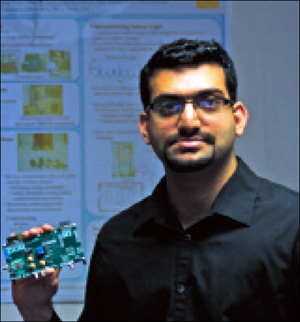Mar 02, 2015Breast cancer is the most common form of cancer among women. Many opt for surgery to remove the tumor, and survival rates are high. But before surgery, women must undergo a procedure to help pinpoint the location of the tumor within the breast. It involves the insertion of a thin "localization wire" into the breast tissue, usually with the aid of mammography or ultrasound. The procedure is painful and provides only a two-dimensional view of where the tumor is.
Fred T. Lee Jr., MD, vice chair of radiology at University of Wisconsin Hospitals and Clinics, observed the discomfort and the scheduling difficulties inherent in the procedure and began looking for an alternative. He turned to a frequent collaborator, Daniel van der Weide, a professor in the department of electrical and computer engineering at the University of Wisconsin-Madison.

Van der Weide had participated in RFID research and written about the technology and wondered if it could be used to pinpoint the location of a tumor within a breast. He and a team of researchers conducted some experiments with low-frequency tags, which can be inserted under the skin with a needle, but found the orientation dependence of the reader-tag interaction too limiting for efficient and ergonomic use in the operating room.
The research team developed a tag, in the form of a tiny pellet, that could be inserted into the tumor during a biopsy. In the OR, a doctor could use a reader, also developed by the team, to determine the distance of the tag—10 cm or 6 cm—from the reader antenna. This approach would eliminate the need for insertion of the localization wire and save upward of $2,500 per patient.
"We have promising prototypes, which we are now refining in preparation for FDA approval," van der Weide says. "Our focus is on minimizing the number of procedures the patient must undergo and maximizing the efficacy of location in the OR."
Van der Weide, Lee and several other doctors and researchers from the university have formed a company called Elucent Medical to bring the technology to market. Other companies are working on a similar approach, but van der Weide is confident Elucent's solution will be successful. "We have a talented and experienced team," he says, "and we're working on all aspects—engineering, medical, regulatory and business—to optimize this system for patient comfort and physician confidence."
